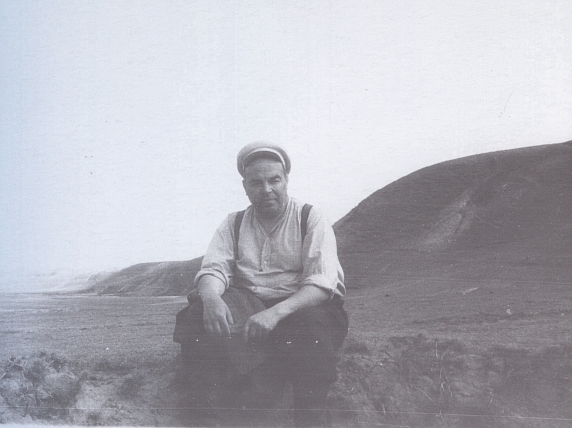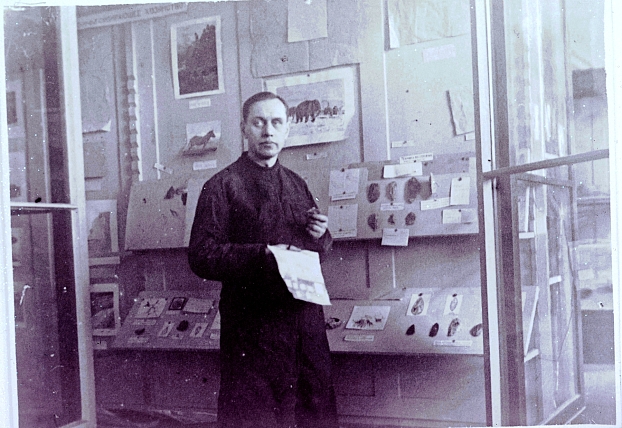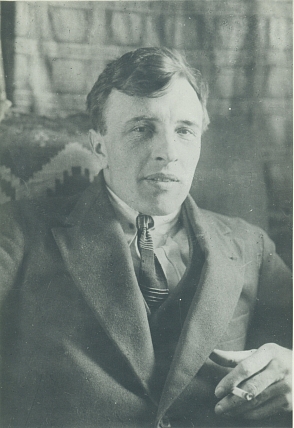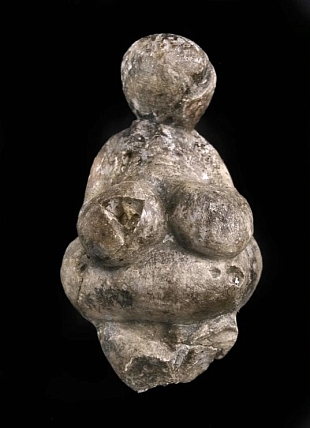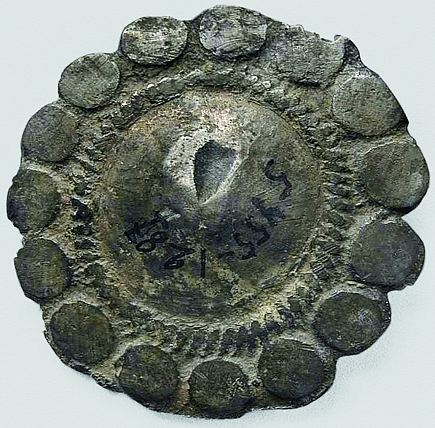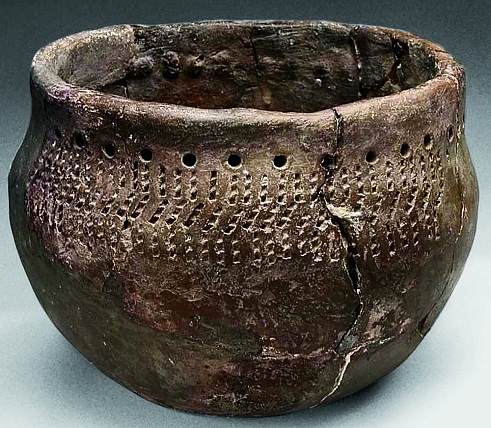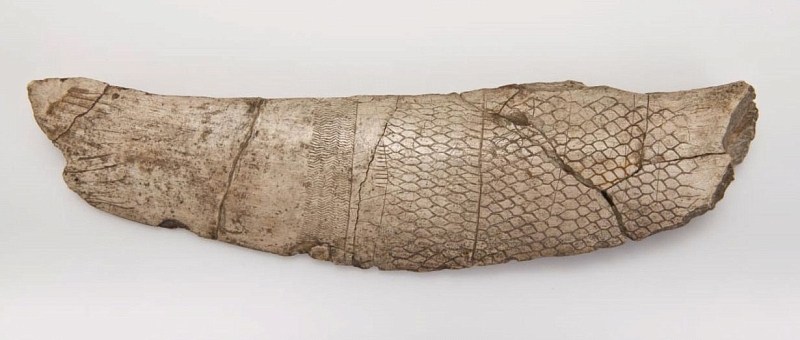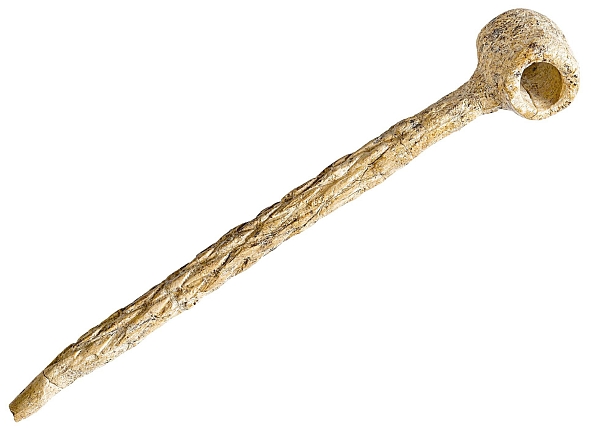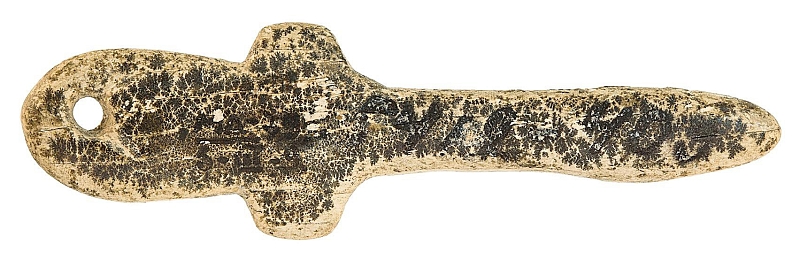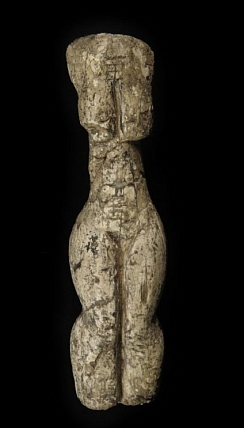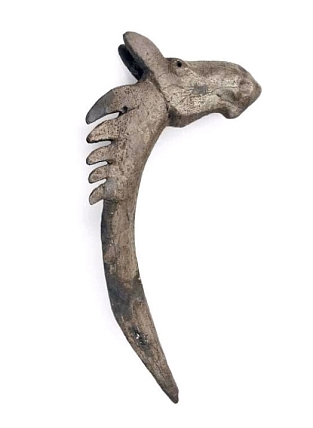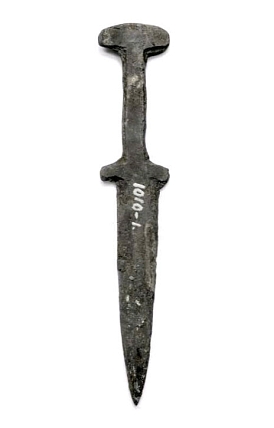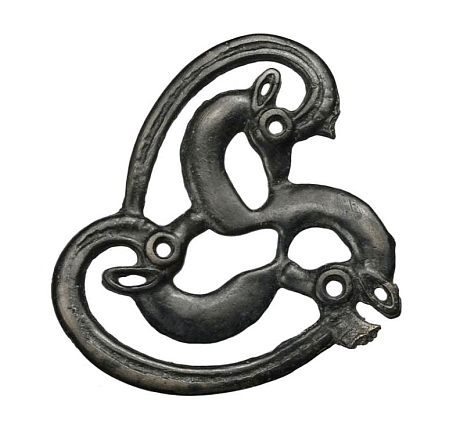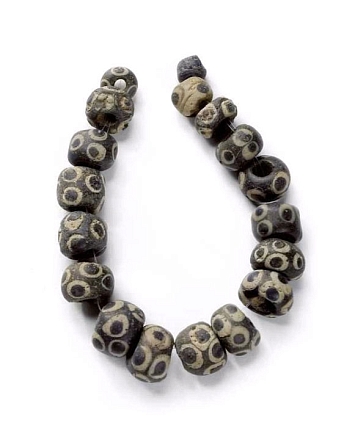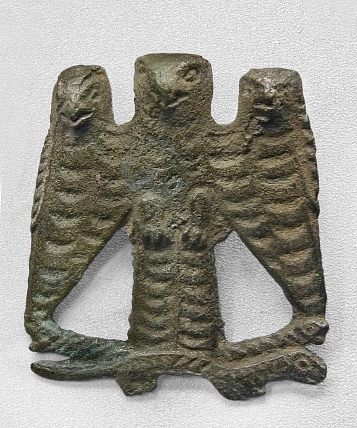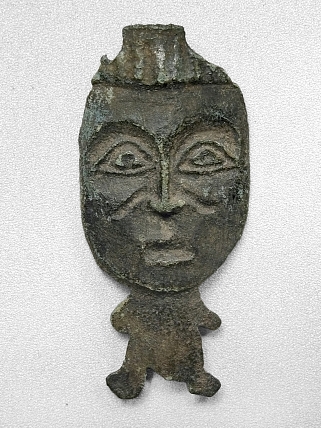- Administration
- Research Departments
- Arctic Research Center
- Europe Research Center
- Department of Australia, Oceania and Indonesia
- Department of America
- Department of Physical Anthropology
- Department of Archeology
- Department of Africa
- Department of East and Southeast Asia
- Department of Caucasus
- Department of Siberia
- Department of Central Asia
- Department of South and Southwest Asia
- Department of the History of Kunstkamera and 18th-century Russian Science (M.V. Lomonosov museum)
- Laboratory of Audiovisual Anthropology
- Laboratory "The International Center of Islamic Studies"
- Laboratory of Museum Technologies
- Management and Museum Services
Department of Archeology
Contact Information
3 Universitetskaya Quay, 199034, St. Petersburg, Russia
Phone: (812) 328-08-12 (ext. 420)
Head of Department
Gennady KHLOPACHEV, Candidate of Sciences (archeology of the Paleolithic, Upper Paleolithic of the Russian plain; stone and bone industries, arrangement of settlements with mammoth bone structures, ancient techniques and technologies of bone processing in the Stone Age)
Department Staff
Ludmila BAZILEVICH, Junior Reseacher
Stanislav BELSKY, Candidate of Sciences, Junior Researcher (Iron Age archeology – medieval East Baltic and north-western Russia; chronology of archeological artifacts, written sources and archeology. A special line of activity is active field exploration, finding and studying new archeological objects, and their registration with regional monument preservation authorities)
Maria BODROVA, Junior Reseacher
Konstantin GAVRILOV, Senior Reseacher
Dmitry GERASIMOV, Candidate of Sciences, Researcher (socio-cultural processes of the Holocene Stone Age in the forest belt of Eastern Europe in the context of natural changes)
Olga YEMELINA, Lead Custodian (Hun-Sarmat archeology; archeological textile; restoration of textile, leather, and vegetable fiber)
Marina POPOVA, Lead Custodian
History of the Department
The first acquisitions of archeological collections of Russian antiquities date back to the Petrine Kunstkamera times. The most important archeological materials of that time were the famous Siberian collection of golden articles assembled by A. N. Demidov, owner of the Tagil metal works, and presented by him to Peter I in 1715, and a collection of gold and silver objects from the environs of Astrakhan. Later, the number of archeological exhibits in the Kunstkamera was continuously increasing, and after a few reforms in the MAE as principal successor of the Kunstkamera, an individual archeology department was established in 1894.
In March 1894, Academician V. V. Radlov was elected Director of the MAE. In the very first report that he delivered in his new position at the session of the Academy of Sciences of March 30, 1894, he appealed for “an application to the Imperial Archeological Commission asking for help in supplementing the Museum’s Archeological Department” (RAS Archive, Coll.1, Schedule 1а, 1894, No. 141, page 249). It is in this document that the MAE archeological collection was named “Department” for the first time, which gives ground to consider this day the birthday of the Department of Archeology.
Its first staff members were N. M. Mogilyansky, D. A. Clemenz, and B. F. Adler. In the early 20th century, I. T. Savenkov and B. E. Petri collaborated with the MAE Department of Archeology. V. N. Chernetsov consulted the Department of Archeology in the mid-1930s. Of well-known archeologists who worked in the department in the first half of the 20th century, the names of V. I. Kamensky, A. V. Schmidt, K. M> Polikarpovich, and V. V. Fedorov should be mentioned. A special role in the development of the Department and building its collections belongs to outstanding Russian archeologists P. P. Yefimenko and S. N. Zamyatnin. P. P. Yefimenko headed the Department in 1933-1938. S. N. Zamyatnin worked for the MAE part-time in 1933-1945. In 1945 he headed the archeology department of the MAE (USSR RAS Institute of Ethnography at that time), and managed it up to his death in 1958. After that, the Department was a part of other structural units of the MAE RAS for several decades. In the early 1990s, the newly established Primitive Society History Team was headed by T. A. Popova. In 1996, the Team was transformed into the Department of Archeology, which again was headed by T. A. Popova. After the death of Tatiana Alexandrovna, Gennady Adolfovich Khlopachov, Cand.Sc., has been Head of the Department since 2005 up to now.
The archeological archive of MAE RAS is the country’s oldest. Today, it is one of the largest national funds of archeological collections in Russia. It accumulates enormous, and unique for their scientific value, materials describing ancient cultures of Eurasia and other continents of all historical periods, from the Lower Paleolithic (500,000 years ago) to the Middle Ages (11th – 12th century).
The initial stage of the Museum’s archeological collections was quite long, from the emergence of the Kunstkamera to the creation of collections of the Museum of Anthropology and Ethnography on its basis (1714-1879). A noticeable role in collection gaining in that period belongs to the Imperial Russian Archeological Society and Imperial Russian Geographic Society, and to acquisitions from L. I. Schrenk, P. V. Alabin, and Count A. S. Uvarov. Academician Karl Baer did extremely much for the assembling of archeological collections.
The second stage of the archeological archive buildup covers the period from the establishment of the MAE to the establishment of an archeology department in its structure (1879-1894). The period is remarkable for acquirements of antiquities from remote regions of Russia – Siberia (I. T. Savenkov) and Sakhalin (I. S. Polyakov).
The third stage in the archive’s development dates back to the turn of the 20th century (1894-1917). That period saw the department’s organizational integration in the MAE system; stable augmentation of its collections continued.
The period of 1917 to 1970 is one of the most memorable ones in the archive generation history, when the acquirement of collections from archeological expeditions operating all over the country was especially intense.
From 2006 till 2013, the archeological archive of MAE RAS was enriched with a large variety of unique Paleolithic collections. They are stone and bone artifacts of the Gravettian sites Kostyonki 1 (upper layer) and Kostyonki 13, Upper Paleolithic site Muralovka, Middle Paleolithic site Ilskaya (digs by N. D. Praslova), Upper Paleolithic sites Kokorevo 1 and Kokorevo 2, (digs by Z. A. Abramova), Upper Paleolithic settlement Yudinovo (digs by Z. A. Abramova, G. V. Grigorieva, G. A. Khlopachov), Upper Paleolithic site Yeliseevichi 1 (digs by G. A. Khlopachov); of the Mesolithic/Neolithic age — the multilayer site Ivanovskoye 7 (digs by M. G. Zhilin), multilayer sites of the Karelian Isthmus: Veschevo 1, Kurkijoki 33, 35, Silino, Komsomolskoye 3 (digs by D. V. Gerasimov), and the medieval burial Kylalahti Kalmistomäki (digs by S. V. Belsky).
Today, the famous archeological archive of MAE numbers over 1,000 collections containing nearly 600,000 depository items:
|
Age |
|
Number of collections |
|
Number of items |
|
Paleolithic |
|
120 |
|
200 000 |
|
Mesolithic |
|
30 |
|
60 000 |
|
Neolithic |
|
255 |
|
90 000 |
|
Eneolithic |
|
39 |
|
60 000 |
|
Bronze and Iron Age |
|
567 |
|
172 000 |
Stone Age materials have a special place. In terms of concentration of the oldest artifacts (Paleolithic, Mesolithic, Neolithic), the Kunstkamera’s archeological archive ranks first among the museums of Russia and CIS countries, and is among the world’s largest.
Many reference artifacts of the archive enabled setting up such sections of primordial history of Russia and CIS countries as the Lower and Upper Paleolithic. For the Lower Paleolithic these are the materials of Teshik-Tash, Sukhaya Mechetka and other sites of Crimea, Caucasus, and Central Asia. For the Upper Paleolithic, it is the world-known sites of the Russian plain (Telmanskaya, Kostyonki-1, 2, 3, 4, 14, 15; Gagarino, Yeliseevichi, Yudinovo) and Siberia (Afontova Gora, Malta, Kokorevo). These materials also enriched the science with quite a number of first-class works of primeval art. Suffice it to mention an impressive series of female figurines, a numerous group of animal images made of mammoth tusk and chalk, mammoth tusk plaques, and bone articles decorated with a geometric ornament and zoomorphic images. It is important that Paleolithic female figurines of mammoth task and chalk are represented by 10 storage units. It is a rather large collection, considering that about 60 such statuettes are known in the territory of Russia, and Western Europe’s museums own not more than 10 of them.
One cannot avoid mentioning extremely interesting Mesolithic and Neolithic artifacts in North-Western Russia and the Siberian region. First of all it is the complexes of the Yuzhny Oleniy Island of Lake Onega, recognized worldwide as unparalleled in the abundance and specific features of artifacts and a great number of primitive art objects among the synchronous burial objects of Fennoscandia.
The Department has materials of asynchronous artifacts of the unique Eneolithic/Copper Age agrarian-and-pastoral culture of Tripolye (4,000-3,000 BC). The Dniester Region collections (Luka-Vrublevetskaya, Rakovets, Kudrintsy, Darabani) contain remarkable earthenware decorated with an intaglio pattern and painted; the collection of anthropomorphic and zoomorphic clay sculptures typical for Tripolye is considerable.
The Kunstkamera’s archeological archive was assembled by efforts of several generations of outstanding Russian scientists: I. S. Polyakov, I. T. Savenkov, K. S. Merezhkovsky, B. E. Petri, P. P. Yefimenko, G. A. Bonch-Osmolovsky, V. A. Gorodtsov, V. I. Ravdonikas, A. P. Okladnikov, V. N. Chernetsov, A. V. Schmidt, S. N. Zamyatnin, S. N. Bibikov, P. I. Boriskovsky, N. N. Gurina, A. N. Rogachev, V. V. Fedorov etc.
The Department also owns a documentary fund and a photo archive (over 1500 items).
Multiple publications have been dedicated to the MAE RAS archeological collections (including the collection catalogues):
- Nechayeva L. G., Popova T. A., Fedorov V. V., Fradkin E. Ye. Arkheologicheskoye sobraniye Museya antropologii i etnografii Petra Velikogo AN SSSR [Archeological archive of the Peter the Great Museum of Anthropology and Ethnography of the USSR RAS] // 250 let Muzeya antropologii i etnografii imeni Petra Velikogo. Leningrad, 1964, pp. 151-168. (MAE collected works, Volume XXII).
- Popova T. A. Drevniye kultury Sibiri (po mateialam arkheologicheskogo sobraniya MAE) [Ancient cultures of Siberia (based on materials of the MAE archeological archive)] // Materialnaya i dukhovnaya kultura narodov Sibiri. Leningrad, 1988. pp. 159-187. (MAE collected works, Volume XLII).
- Popova T. A. Kollektsii A. P. Okladnikova v arkheologicheskom sobranii MAE /.Collectins of A. P. Okladnikov in the MAE archeological archive// Problemy drevnikh kultur Sibiri. Novosibirsk, 1985, pp. 38-45.
- Popova T. A., Ravnushkin L. V. Kollektsii S. N. Zamyatnina, khranyaschiesya v otdele arkheologii MAE RAN [Collections of S. N. Zamyatnin stored in the Department of Archeology of the MAE RAS] // Materialy mezhdunarodnoi konferentsii “Lokalnye razlichiya v kamennom veke”, posvyaschennoi 100-letiyu so dnya rozhdeniya S. N. Zamyatnina. St. Petersburg, 1999, pp. 18-27.
- Svod arkheologicheskikh istochnikov Kunstkamery. Vypusk 1 [Corpus of Kunstkamera archeological sources. Issue 1]. Publication editor: G. A. Khlopachov. St. Petersburg: Nauka, 2006. MAE RAS Press. 342 pp.
- Svod arkheologicheskikh istochnikov Kunstkamery. Vypusk 2. Epokha bronzy – pozdneye srednevekovye [Corpus of Kunstkamera archeological sources. Issue 2. Bronze Age to Late Middle Ages]. Publication editor: G. A. Khlopachov. St. Petersburg, Nauka, 2009.
- Svod arkheologicheskikh istochnikov Kunstkamery. Vypusk 3. Mogilnik Kyulalakhti Kalmistomyaki v Severo-Zapadnom Priladozhye [Corpus of Kunstkamera archeological sources. Issue 3. Kylalahti Kalmistomäki burial in the north-western Ladoga region]. Series publication editor: G. A. Khlopachov. Publication editor: A. A. Selin. St. Petersburg, Nauka, 2012.
- Svod arkheologicheskikh istochnikov Kunstkamery. Vypusk 4. Istoriya arkheologicheskogo sobraniya MAE. Verkhniy paleolit [Corpus of Kunstkamera archeological sources. Issue 4. History of the MAE archeological archive. Upper Paleolithic]. (Publication editor: Khlopachov G. A.) St. Petersburg, 2014.
- Khlopachov G. A. (publication editor). Verkhniy paleolit. Obrazy, simvoly, znaki. Katalog predmetov iskusstva malykh form iz arkheologicheskogo sobraniya MAE RAN [Upper Paleolithic. Images, symbols, and signs. Catalogue of small-size artwork from the MAE archeological archive]. St. Petersburg, 2016
Essential topics of research
2017 – 2019 Research Topic: Generation of ancient and current population of Eurasia and America according to data of ethnology, physical anthropology, and archeology (supervisors: Yu. Ye. Beryozkin, D.Sc., V. I. Khartanovich, Cand. Sc., G. A. Khlopachov, Cand. Sc.)
Research topics: Archeological heritage of the north-west and center of Russia: Study, preservation, and publication of reference artifacts (supervisor: Khlopachov G. A.)
Research Sections
- “Yudinovo site and its place in the Upper Paleolithic of the Desna Region” (G. A. Khlopachov, Cand. Sc.)
- “Artifact groups of the East Baltic Stone Age/Early Metal Age refugium in the Narva-Luga region” (D. V. Gerasimov, Cand. Sc.)
- “Origins and main stages of generation of material culture of the Karelian Isthmus and North Ladoga population in the Viking epoch and late Middle Ages (10th – 14th cc.)” (S. V. Belsky, Cand. Sc.)
Essential Publications
- Demidenko Y.E. and Uthmeier T. With contributions by G. A. Khlopachev and M.V. Sablin Kiik-Koba Grotto, Crimea (Ukraine). Re-Analysis of a Key Site of the Crimean Micoquian. Kölner Studien zur Prähistorischen Archäologie, 3. Published for the Institute of Prehistory and early History of Cologne University, Cologne, 2013
- Khlopachev G.A. Les techniques de debitage de l`ivoire dans les sites de la Plaine Russe au Paleolithique Superieur (25000 - 13000 av. J.-C.) // Prehistoire Europeenne,Vol. 16-17, Liege, 2000-2002. P. 215-230.
- Khlopachev G.A. , Sablin M.V. The earliest Ice Age dogs: evidence from Eliseevichi 1 // Current Anthropology. Vol. 43/5. 2002. P. 795-798.
- Rosentau, A., Muru, M., Kriiska, A., Subetto, D. A., Vassiljev, J., Hang, T., Gerasimov, D., Nordqvist, K., Ludikova, A., Lõugas, L., Raig, H., Kihno, K., Aunap, R. & Letyka, N. 2013: Stone Age settlement and Holocene shore displacement in the Narva-Luga Klint Bay area, eastern Gulf of Finland. Boreas. 10.1111.
- Saksa A., Belskiy S., Kurbatov A., Polyakova N., Suhonen M. New archaeological excavations in Viipuri. Results of field investigations of the 1998–2001 seasons and current research problems of urban history // Fennoscandia Archaeologica XIX. – Helsinki, 2002. – P. 37–64.
- Saksa A., Belsky S., Suhonen M. Kaupunkiarkeologiaa Viipurissa. Turun ja Viipurin kaupunkiarkeologien tapaaminen // Suomen Keskiajan Arkeologian Seura, 2. – Turku, 2002b. – P. 4–10.
- Seitsonen O., Nordquist K., Gerasimov D.V., Lisitsyn S.N. «The good, the bad, the weird»: Stone Age and Early Metal Period radiocarbon dates and chronology from the Karelian Isthmus, North-West Russia // Geochronometria. 2012, Volume 39, Number 2, pp. 101-121 http://link.springer.com/article/10.2478/s13386-012-0001-9
- Yuri E. Demidenko and Thorsten Uthmeier. With contributions by Gennadiy A. Khlopachevand Mikhail V. Sablin. Kiik-Koba Grotto, Crimea (Ukraine). Re-Analysis of a Key Site of the Crimean Micoquian// Kölner Studien zur Prähistorischen Archäologie (KSPA) № 3. Published for the Institute of Prehistory and early History of Cologne University, Cologne, 2013.
In Russian:
- Svod arkheologicheskikh istochnikov Kunstkamery Vypusk 1. [Corpus of Kunstkamera archeological sources. Issue 1]. Publication editor: G. A. Khlopachov. St. Petersburg: Nauka, 2006. MAE RAS Press, 342 pp.
- Svod arkheologicheskikh istochnikov Kunstkamery. Vypusk 2. Epokha bronzy – pozdneye srednevekovye [Corpus of Kunstkamera archeological sources. Issue 2. Bronze Age to Late Middle Ages]. Publication editor: G. A. Khlopachov. St. Petersburg, Nauka, 2009, 198 pp.
- Problemy biologicheskoi i kulturnoi adaptatsii chelovecheskikh populyatsiy. Tom 1. Arkheologiya. Adaptatsionnye strategii drevnego naseleniya Severnoi Yevrazii: syrie i priemy obrabotki [Problems of biological and cultural adaptation of human populations. Volume 1. Archeology. Adaptation strategies of ancient population of Northern Eurasia: Raw materials and processing techniques]. Publication editor: G. A. Khlopachov. St. Petersburg, Nauka, 2008. 22 printed sheets, 210 pp.
- Khronologiya, periodizatsiya i krosskulturnye svyazi v kulture kamennogo veka [Chronology, periodization, and cross-culture relations in the Stone Age culture]. Zamyatninskiy sbornik. Issue 1. Publication editor: G. A. Khlopachov. St. Petersburg: Nauka, 2008, 24 printed sheets, 210 pp.
- Predmety vooruzheniya i iskusstva iz kosti v drevnikh kulturakh Severnoi Yevrazii (tekhnologicheskiy i funktsionalnyi aspekty). [Bone weapons and artwork in ancient cultures of Northern Eurasia (technological and functional aspects)]. Zamyatninskiy sbornik, Issue 2. Publication editor: G. A. Khlopachov. St. Petersburg, Nauka, 2011, 252 pp.
- Belsky S. V. Mogilnik Kyulalakhti Kalmistomyaki v Severo-Zapadnom Priladozhye. Rezultaty arkheologicheskikh issledovaniy 2006-2009 godov. Svod arkheologicheskikh istochnikov Kunstkamery. [Kylalahti Kalmistomäki burial in the north-western Ladoga region. Results of archeological studies in 2006-2009. Corpus of Kunstkamera Archeological Sources]. Issue 3. St. Petersburg, 2012, Nauka, 238 pp.
- Belsky S. V. Yugo-Vostochnoye Priladozhye v period 860–950-h godov: problemy formirovaniya i razvitiya osnovnykh tipov pogrebalnogo obryada i ikh vzaimodeistviye [South-eastern Ladoga region in the years 860-950: Problems of generation and development of basic types of funeral rite and their interaction] // Arkheologicheskiye vesti. Issue 6. St. Petersburg: IIMK RAN, 1999, pp. 197–215.
- Belsky S. V. Pogrebalnyi obryad mogilnika Kyulalakhti Kalmistomyaki v Severo-Zapadnom Priladozhye (po rezultatam arkheologicheskikh issledovaniy 2006-2009 godov) [Funeral rite of the Kylalahti Kalmistomäki burial in the north-west Ladoga region] // Uchenye zapiski Petrozavodskogo Gosudarstvennogo Universiteta. Issue 3 (124). Petrozavodsk: Petrozavodsk State University Press, 2012, pp. 20–24.
- Gerasimov D. V., Krijska A., Lisitsyn S. N. Pamyatniki kamennogo veka yugo-vostochnogo poberezhya Finskogo zaliva: khronologiya i geomorfologiya [Stone Age artifacts of the south-eastern coast of the Gulf of Finland] // Kratkiye soobscheniya instituta arkheologii RAN. Issue 227, 2012, pp. 241-247
- Gerasimov D. V., Krijska A., Lisitsyn S. N. Osvoyeniye poberezhya Finskogo zaliva Baltiyskogo morya v kamennom veke. Materialy III Severnogo arkheologicheskogo kongressa [Reclamation of the Gulf of Finland coast, Baltic Sea, in the Stone Age. Materials of III Northeran Archeological Congress]. Yekaterinburg, Khanty-Mansiysk. IzdatNaukServis, 2010, pp. 28-53
- Gerasimov D. V., Subetto D. A. Istoriya Ladozhskogo ozera v svete arkheologicheskikh dannykh [History of Lake Ladoga in the light of archeological data] Izvestiya RGPU im. Gertsena 2009, No. 106, pp. 37-49bor.12004. ISSN 0300-9483.
- G. A. Khlopachov. Bivnevye industrii verkhnego paleolita Vostochnoi Yevropy [Tusk industries of the Upper Paleolithic in Eastern Europe]. St. Petersburg, 2006, Nauka, p.262
- G. A. Khlopachov, Girya Ye. Yu. Sekrety drevnikh kostorezov Vostochnoi Yevropy i Sibiri – priemy obrabotki bivnya mamonta i roga severnogo olenya v kamennom veke (po arkheologicheskim i eksperimentalnym dannym) [Secrets of ancient bone carvers of Eastern Europe and Siberia: mammoth tusk and reindeer horn processing techniques in the Stone Age (based on archeological and experimental data)]. St. Petersburg, Nauka, 2010.
- G. A. Khlopachov, Ye. Yu. Girya. Homo sapiens in the glacial conditions of the Extreme North. Life and technological achievements of mammoth hunters. Tokyo, Yuzankaku Press, 2013, translated by Hideyaki Kimura and Ayako Kimura (in Japanese)
- G. A. Khlopachov, Gribchenko Yu. N. Vozrast i etapy zaseleniua Yudinovskogo verkhnepaleoliticheskogo poseleniya [The age and populating phases of the Yudinovo Upper Paleolithic settlement]// KSIA, Issue 227, Moscow, 2012
- G. A. Khlopachov. Ornamentirovannye plastiny v paleoliticheskoi stoyanke Yeliseevichi 1. Kategorialnyi sostav i osobennosti ornamentatsii [Ornamented plaques in the Paleolithic site Yeliseevichi 1. Categories and ornamentation features] //Trudy Gosudarstvennogo Ermitazha. Issue XLIV. Animal and man. Primeval artwork of Eurasia. St. Petersburg, 2009, pp. 29–32
- G. A. Khlopachov (publication editor). Verkhniy paleolit. Obrazy, simvoly, znaki. Katalog predmetov iskusstva malykh form iz arkheologicheskogo sobraniya MAE RAN [Upper Paleolithic. Images, symbols, and signs. Catalogue of small-size artwork from the MAE archeological archive]. St. Petersburg, 2016
- Zamyatninskiy sbornik. Vyp. 3. Kamennyi vek: ot Atlantiki do Patsifiki [Zamyatnin Collection. Issue 3. Stone Age: From the Atlantic to the Pacific] (publication editors: Khlopachov G. A., Vasiliev S. A.) St. Petersburg, 2014. ISBN 978-5-88431-251-7
- Zamyatninskiy sbornik. Vyp. 4. Drevniye kultury Vostochnoi Yevropy: etalonnye pamyatniki i opornye kompleksy v kontekste soveremennykh arkheologicheskikh issledovaniy [Ancient cultures of Eastern Europe: Reference artifacts and key complexes in the context of today’s archeological research] (publication editor: Khlopachov G. A.). St. Petersburg, 2015. ISBN 978-5-88431-282-1
- Svod arkheologicheskikh pamyatnikov Kunstkamery. Vypusk 4. Istoriya arkheologicheskogo sobranita MAE. Verkhniy paleolit [Corpus of Kunstkamera archeological sources. Issue 4. History of the MAE archeological archive. Upper Paleolithic] (publication editor: Khlopachov G. A.) St. Petersburg, 2014. ISBN 978-5-88431-267-8
